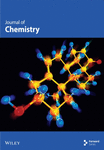GC–MS and FTIR Characterization of Bioactive Compounds in Aqueous Extracts of Terminalia laxiflora Root and Mitragyna inermis Stem Bark
Abstract
The contribution of medicinal plants in healthcare delivery has been acknowledged due to the numerous plant chemicals with health-promoting properties. In Northern Ghana, where health resources are scarce coupled with endemic poverty, most traditional folks rely heavily on plants as a source of treatment. Among some of the common plants employed for the treatment of malaria, diarrhea, vomiting, stomachache, wounds, and epilepsy are Terminalia laxiflora root and Mitragyna inermis stem bark. Despite the claimed efficacy and potency of these medicinal plants, little is known about the bioactive compounds in these plants. The current study aimed to characterize the phytochemical constituents in the aqueous extracts of Terminalia laxiflora root and Mitragyna inermis stem bark. Fourier transform infrared spectroscopy and gas chromatography coupled with mass spectrometry were employed for this study. The FTIR analysis revealed the presence of alkene, carbonyl, carboxylic acids, hydroxyl groups, alkyl halides, ethers, and esters. The GC-MS analysis also revealed the presence of seventeen (17) different phytochemical constituents including trans-13-octadecanoic acid, methyl ester, 9-octadecanoic acid, (E)-, hexadecenoic acid, n-hexadecenoic acid, phenol, 4-heptyl- 2-hydroxy-1-(hydroxymethyl)ethyl ester, 9-octadecenamide, (Z)- and 9-octadecenoic acid (Z), and 3-dihydroxyphene. These compounds have supported the treatment of various diseases in humans as natural compounds. The above-characterized bioactive compounds might be responsible for the traditional folks’ claimed efficacy of these medicinal plants. The study findings will contribute to the existing knowledge and also provide scientific data for future research. Further studies should isolate and purify these compounds as lead compounds for possible drug development.
Conflicts of Interest
The authors declare no conflicts of interest.
Open Research
Data Availability Statement
The data that support the findings of this study are available from the corresponding author upon reasonable request.




